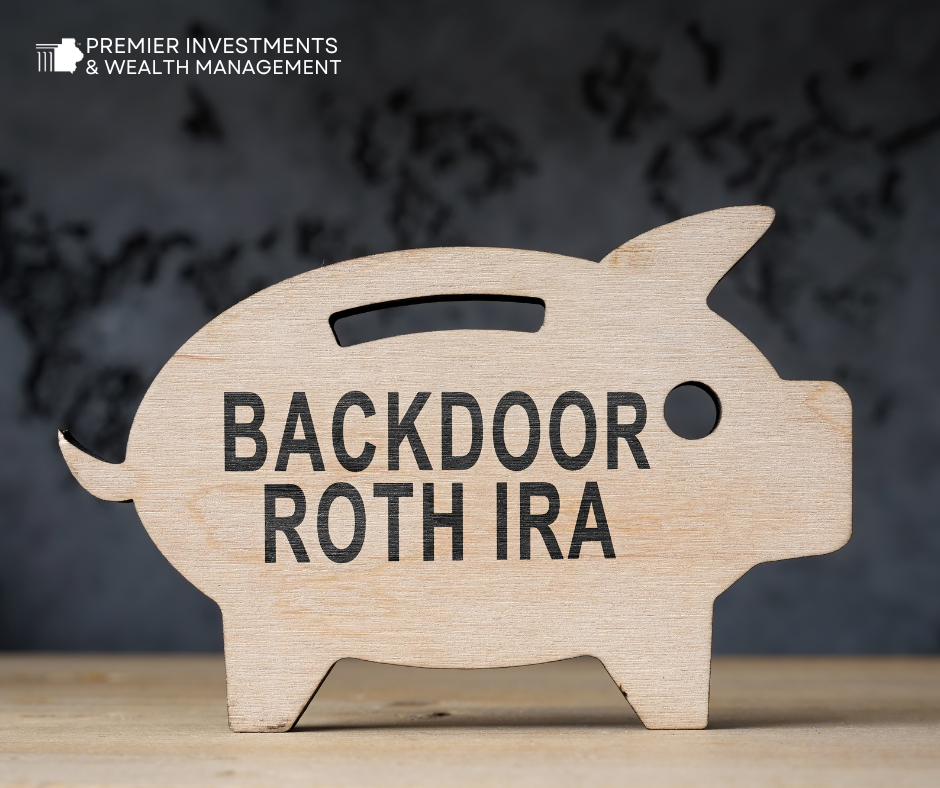Breaking Down The Backdoor Roth IRA Strategy

16 Jul 2024
What is a Backdoor Roth IRA?
A Backdoor Roth IRA is a strategy that allows individuals to contribute to a Roth IRA even if their income exceeds the limits set by the IRS for Roth IRA eligibility. Essentially, it’s a legal loophole that involves making non-deductible contributions to a traditional IRA and then converting those funds to a Roth IRA. This approach can provide significant tax advantages, particularly for high-income earners.
How Does a Backdoor Roth IRA Work?
Here’s a step-by-step breakdown of how to execute a Backdoor Roth IRA:
- Contribute to a Traditional IRA: The first step is to make a non-deductible contribution to a traditional IRA. The contribution limit for 2024 is $7,000, or $8,000 if you are 50 or older.
- Convert to a Roth IRA: After the contribution is made, you convert the amount from the traditional IRA to a Roth IRA. This conversion can be done immediately or after some time, depending on your preference and tax planning strategy.
- Pay Taxes on Earnings: If the traditional IRA contributions have earned any interest before conversion, those earnings will be subject to taxes. However, if converted promptly, the tax impact is usually minimal.
When Should You Consider a Backdoor Roth IRA?
A Backdoor Roth IRA is particularly beneficial for high-income earners who exceed the income limits for direct Roth IRA contributions. Here are some scenarios when you should consider this strategy:
- High Income: If your modified adjusted gross income (MAGI) is above the Roth IRA contribution limits ($161,000 for single filers and $240,000 for married couples filing jointly in 2024), a Backdoor Roth IRA allows you to circumvent these restrictions.
- Tax-Free Growth: If you want your investments to grow tax-free and enjoy tax-free withdrawals in retirement, a Roth IRA is ideal. The Backdoor Roth IRA provides a pathway to these benefits.
- Estate Planning: Roth IRAs do not have required minimum distributions (RMDs) during the account holder’s lifetime, making them a useful tool for estate planning.
Why Should You Use a Backdoor Roth IRA?
There are several compelling reasons to use a Backdoor Roth IRA:
- Tax-Free Withdrawals: Contributions to a Roth IRA grow tax-free, and qualified withdrawals in retirement are also tax-free, providing significant tax savings.
- No Required Minimum Distributions (RMDs): Unlike traditional IRAs, Roth IRAs do not require you to take RMDs during your lifetime, allowing your investments to grow undisturbed.
- Estate Planning Benefits: Roth IRAs can be passed on to heirs tax-free, and beneficiaries can enjoy tax-free withdrawals, making it a powerful estate planning tool.
- Diversification of Tax Treatment: Having both traditional and Roth retirement accounts allows you to manage your taxable income in retirement more flexibly, potentially reducing your overall tax burden.
Considerations and Potential Pitfalls
While the Backdoor Roth IRA is a powerful strategy, it’s essential to be aware of potential pitfalls:
- Pro-Rata Rule: If you have other traditional, SEP, or SIMPLE IRAs, the IRS’s pro-rata rule could complicate your conversion and result in a larger tax bill. This rule requires you to consider all your IRAs when calculating the taxable portion of your conversion.
- Legislative Risks: Tax laws can change, and future legislation might impact the viability of the Backdoor Roth IRA strategy. Staying informed and consulting with a financial advisor is crucial.
- Timing and Execution: Proper timing and execution are essential to minimize tax liabilities. Consulting with a tax professional or financial advisor can help you implement this strategy correctly.
Conclusion
A Backdoor Roth IRA is a valuable strategy for high-income earners to gain access to the benefits of a Roth IRA, including tax-free growth and withdrawals. By understanding the mechanics, timing, and potential pitfalls, you can effectively utilize this approach to enhance your retirement savings and overall financial strategy. As always, consult with a financial advisor to tailor the strategy to your specific circumstances and goals.
Important Information
Consult your tax professional about eligibility to Roth and Traditional IRA contributions. Contributions and earnings in a Roth IRA can be withdrawn without paying taxes and penalties if the account owner is at least 59 ½ and has held their Roth IRA for at least five years.
Traditional IRA account owners have considerations to make before performing a Roth IRA conversion. These primarily include income tax consequences on the converted amount in the year of the conversion, withdrawal limitations from a Roth IRA, and income limitations for future contributions to a Roth IRA. In addition, if you are required to take a minimum distribution (RMD) in the year you convert, you must do so before converting to a Roth IRA.
This information is not intended to be a substitute for specific individualized tax advice. We suggest that you discuss your specific tax issues with a qualified tax advisor.
Securities and advisory services offered through LPL Financial, a registered investment advisor, Member FINRA/SIPC.
The opinions voiced in this material are for general information only and are not intended to provide specific advice or recommendations for any individual.
All investing involves risk including the possible loss of principal. No strategy assures success or protects against loss.
